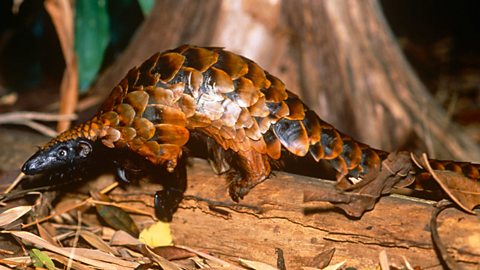Key points
- Plants adapt in many ways so that they survive in different habitats.
- These adaptations exist because they give a survival advantage.
- Adaptations include the ability to survive in dry conditions, fast flowing water and even salt water.
Adaptations
All species have features which make them suited to their environment. The characteristics that give plants an advantage are called adaptationA characteristic that helps an organism to survive in its environment.. All species have evolutionThe process by which small changes in organisms occur over long periods of time and new species are formed. these adaptations over millions of years and would not survive to reproduce without them.

Video
Just like you probably have a winter coat if you live in a cold climate, or sandals if you live by the beach, plants have their own version of dressing for the weather. Plants survive in nearly every climate on Earth because of adaptations they've developed to suit their environments.
Bristlecone pines live in areas with harsh weather and poor soil. They have shallow branching routes that maximise water uptake in dry environments and thick, waxy needles instead of leaves to minimise water loss. Each needle can photosynthesise for up to 45 years, which conserves resources by reducing the need to grow new ones.
Thanks to these adaptations Bristlecone Pines can live as long as 4,800 years longer than any other tree.
Cacti live in the desert. They have large, fleshy stems to store water, thick, waxy skin to protect that water from evaporating in the heat and spikes to keep animals from getting to it.
That might be why you hear about tree huggers, but you never hear about cactus huggers.
Can you answer these questions based on the video?
1. What is a characteristic that an organism has developed to suit its environment called?
2. How long can the needles of bristlecone pine trees photosynthesise for?
- An adaptation
- 45 years
Cacti in deserts
Cacti grow in desert conditions where there is very little water. It is often very hot during the day and cold at night. The adaptations of cacti include:
- Thick, waxy outer layer to reduce water loss and reflect heat.
- Large, fleshy stems to store water.
- Spines instead of leaves to reduce water loss and protect from grazing animals.
- Shallow, widespread roots to catch as much infrequent rainfall as possible. Some species of cacti have very deep roots to find water underground instead.
Insect-eating plants in bogs

bogAn area of wet ground that cannot be walked on. Often called a swamp. are areas of wet ground that are too soft to walk on. They are often very muddy.
The soils here are often low in nutrients so carnivorous plantsA plant like a Venus fly trap that has evolved the ability to catch and consume insects to provide nutrients. have adaptations to provide additional nutrients by consuming insects.
Below are some examples of these adaptations:

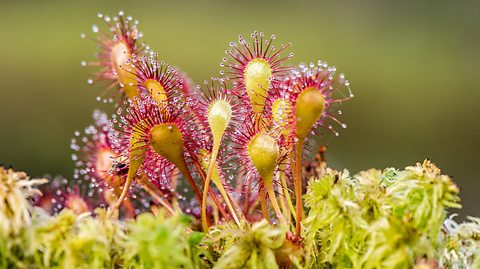
- Venus fly traps have leaves that close, surround and catch insects.
- Pitcher plants have cylindrical leaves with fluid at the bottom to trap insects that fall in.
- Sundew plants have sticky pads.

Water lilies in streams
Water lilies grow in streams which can have fast flowing currents. The adaptations of water lilies include:
- Strong roots to anchor the plant in the stream bed.
- Strong, flexible stems to avoid being swept away.
- Leaves that grow on top of the water to maximise photosynthesisA chemical reaction that occurs in the chloroplasts of plants in which the energy in light is stored in glucose..
- Flowers that grow on top of the water to be pollinationThe fertilisation of flowers by the transfer of pollen from one to another. by insects.
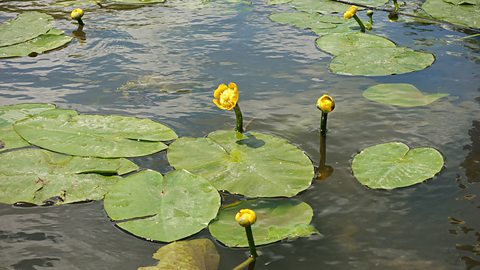
Giant redwoods in the mountains
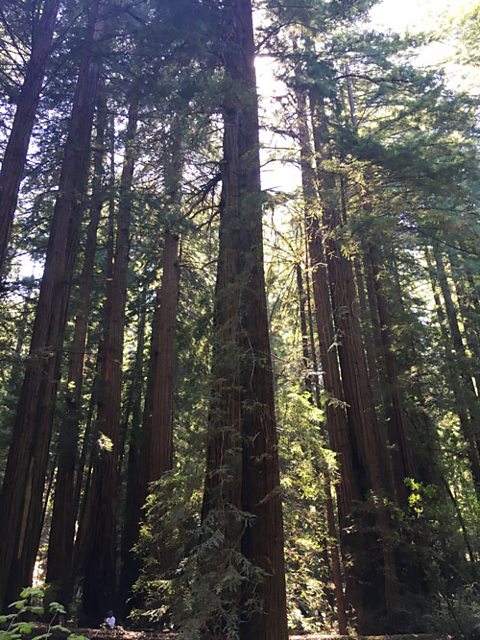
Giant redwoods are some of the largest living things on the planet. The following adaptations make them suited to mountain forests:
- Needles reduce water loss and protect from grazing animals.
- Shallow roots catch as much rainfall after a shower as possible.
- Thick bark is resistant against forest fires.
- Height maximises the exposure to sunlight.
A coast redwood in California nicknamed Hyperion is 116m tall - this makes it the tallest known living tree in the world. The exact location of the tree is kept secret to protect it.

Mangrove on the beach
Mangroves are plants that grow on beaches. The salt in seawater kills most plants very quickly but mangroves have the following adaptations:
- Deep roots to hold the plant in place.
- Warty growths on roots to protect pores. These take in oxygen when above water and allow water into the plant and filter out salt when under water.
- Leaves which store salt and then drop off.
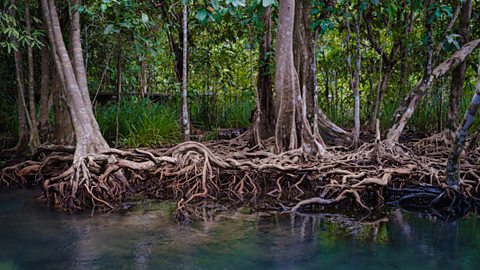
Climbing plants in forests and woodlands
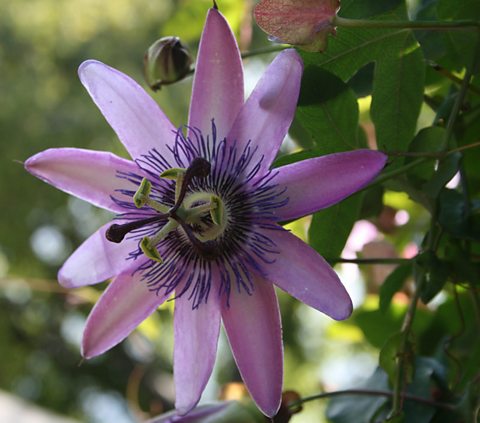
All plants need light for photosynthesis. Many plants grow in dense forests or woodlands surrounded by other plants that are also competing for light. Adaptations of climbing plants include:
- Ivy has sticky pads to help it attach to trees.
- Catās claw creeper plants have sharp hooks to help them climb.
- The tips of passionflower's shoots rotate around to find a suitable place to latch onto next.

Test your knowledge
Quiz
Test questions
Write a paragraph to answer the following questions. Tap 'Show answer' to see some points you could have included.
Describe the adaptations of cacti.
- Cacti have a thick, waxy outer layer to reduce water loss and reflect heat.
- They also have large, fleshy stems to store water.
- Their spines reduce water loss and protect from grazing animals.
- They have both deep roots to find water and shallow roots to catch infrequent rainfall.
Describe the adaptations of water lilies.
- Water lilies have strong roots to anchor the plant in the stream bed.
- They also have strong, flexible stems to avoid being washed away.
- Their leaves grow on top of the water to maximise photosynthesis.
- Their flowers grow on top of the water to be pollinated by insects.
Play the Atomic Labs game! gamePlay the Atomic Labs game!
Try out practical experiments in this KS3 science game.

More on Ecosystems and habitats
Find out more by working through a topic
- count7 of 7
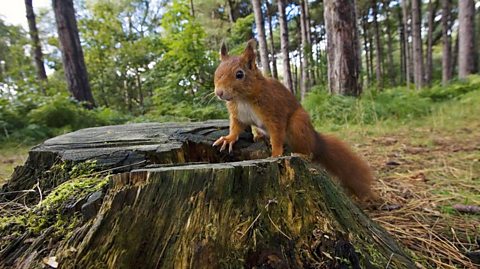
- count1 of 7

- count2 of 7
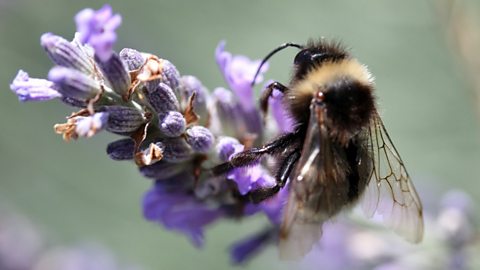
- count3 of 7
